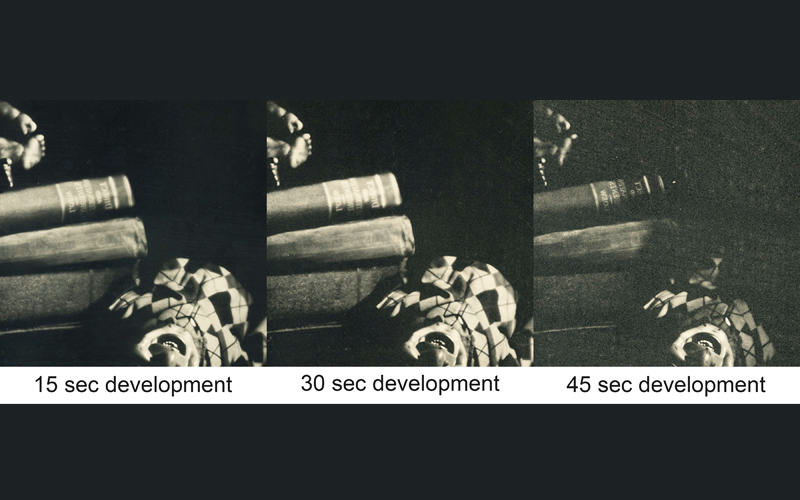Hazards of Over Development

Exposure and development are interrelated and work together. To some degree, one can often compensate for the other. But therein lies the rub. Liberally adjusting development times to compenste for inappropriately exposed plates will inevitably lead to unwanted artifacts in the print - either blue tinted prints at the under development end or noisy shadow areas at the over development end.
To produce consistently crisp clean images, get to know the materials you're using. Take a moment, shoot a few test plates, and determine the upper and lower limits of exposure and development for your tin and developer combination. Choose a development time somewhere near the middle of these extremes and stick with it.
Avoid excessive development times. This is especially true of tin types. The longer developer is in contact with the plate, the greater the opportunity for non image forming silver to show up in the developed plate resulting in various forms of image "fog". The illustration above is an example of what happens with extended development times. With each successive image, the development time was increased. The first image in the series uses a development time of 15 seconds (a good, average value to use) and produces a clean image. The second image has twice this development time; here you can see noise just beginning to appear in the shadow areas. The third image in the sequence was developed for 45 seconds, three times the original development time. In this image we can clearly see a great deal of background "noise", including diagonal banding which corresponds to the removal of the protective plastic sheet from the tin.
If you're seeing "noise" in the shadow areas of your image, the solution to the problem is to reduce the development time and increase exposure accordingly.
Remember, shoot some test plates to deterimine the appropriate exposure and development times for your materials. Once you've determined a workable development time for your materials, stick with it. I highly recommend using a metronome to time your development. This will bring consistency to your technique, and your images!
